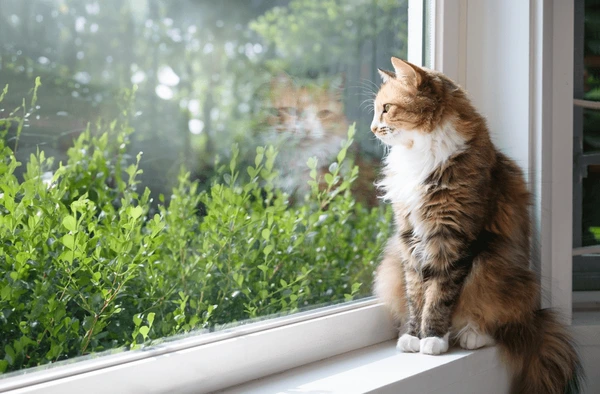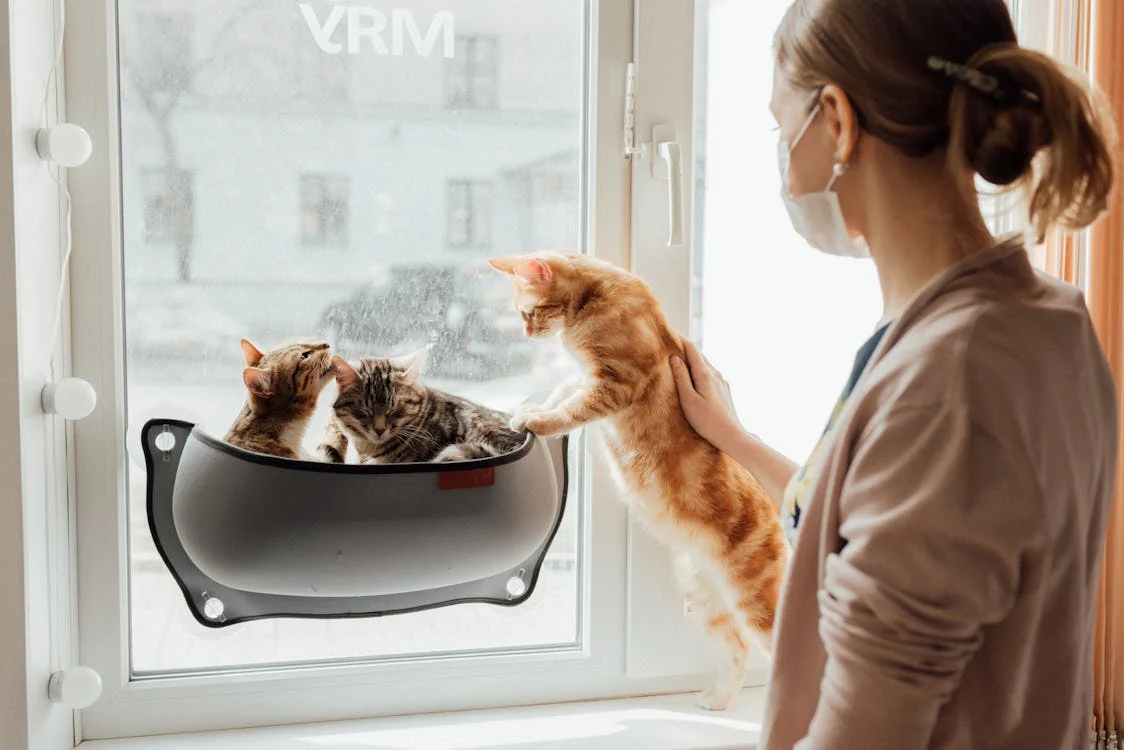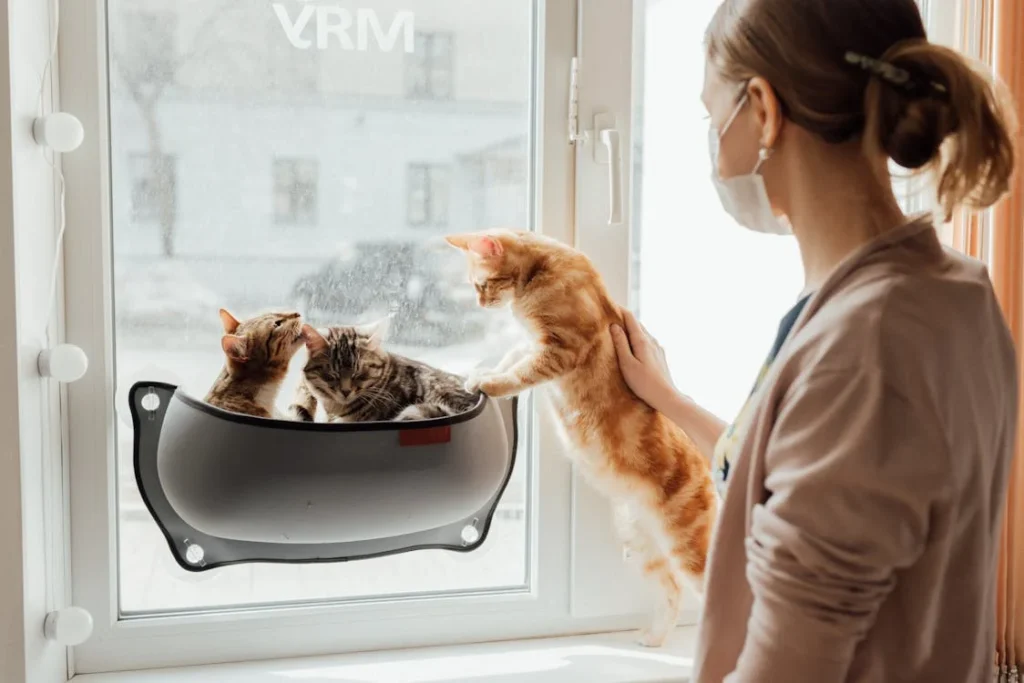
Introduction
Keeping your cat indoors is one of the best ways to protect them from dangers like traffic, predators, and diseases. But indoor life can sometimes be boring or stressful for cats if their environment isn’t designed thoughtfully. Cats are curious, intelligent, and active creatures who need both safety and stimulation to thrive.
At PetPatch, we believe that every indoor cat deserves a home that feels enriching, fun, and secure. In this comprehensive guide, we’ll show you how to create an indoor space that caters to your cat’s natural instincts—hunting, climbing, scratching, exploring, and relaxing—all while keeping them safe.
Ready to turn your home into a cat paradise? Let’s dive in!
1. Understanding Your Indoor Cat’s Needs
Cats are natural hunters and explorers with complex physical and emotional needs. Indoor cats require more than food and shelter—they need environmental enrichment to prevent boredom, stress, and destructive behavior.
Key Needs of Indoor Cats:
- Physical exercise: To keep muscles strong and maintain a healthy weight.
- Mental stimulation: To challenge their curious minds and reduce anxiety.
- Safe retreat spaces: Areas to hide and rest without disturbance.
- Scratching outlets: To maintain healthy claws and mark territory.
- Sensory enrichment: Toys and activities that engage their senses of smell, sight, and hearing.
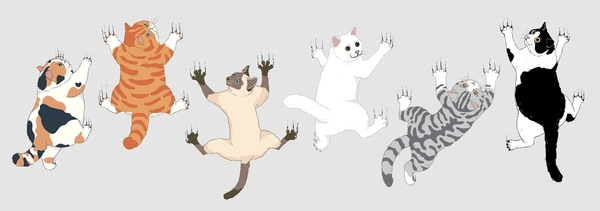
2. Safety First: Making Your Home Cat-Proof
Before adding stimulation, make sure your indoor environment is safe. Cats are agile and curious, so small hazards can lead to injury.
Common Indoor Hazards:
- Toxic plants: Lilies, philodendrons, and pothos can be deadly if ingested.
- Household chemicals: Keep cleaning products, medications, and pesticides locked away.
- Small objects: Rubber bands, strings, or small toys can cause choking or intestinal blockages.
- Open windows and balconies: Use secure screens to prevent falls.
- Electrical cords: Hide or cover cords to prevent chewing injuries.
- Human food: Chocolate, onions, garlic, and some artificial sweeteners are toxic.
Tips for Cat-Proofing:
- Remove or relocate toxic plants.
- Store chemicals in inaccessible cabinets.
- Use cord protectors or tape cords to baseboards.
- Always supervise outdoor access or install enclosed “catios.”
- Keep lids on trash cans and cover toilet seats.
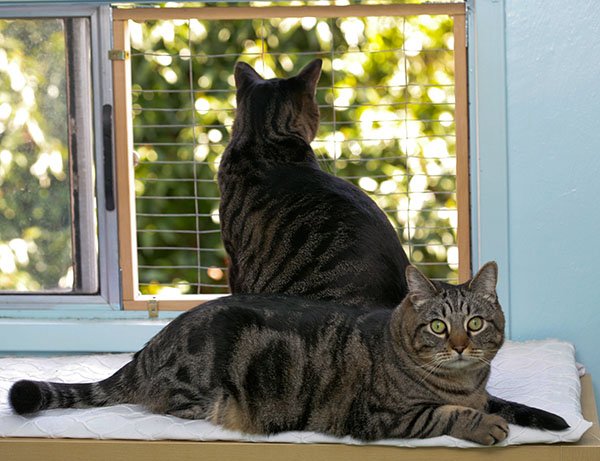
3. Creating a Cat-Friendly Space: Essential Elements
Cats love spaces where they feel in control and can observe their surroundings safely.
Vertical Space & Climbing
Cats naturally climb and perch high to survey their territory. Provide:
- Cat trees or towers with multiple levels
- Wall-mounted shelves or perches
- Window seats for sunbathing and birdwatching
Cozy Hideouts & Beds
Cats need quiet retreats to nap or escape stress. Ideal spots include:
- Covered beds or tunnels
- Cardboard boxes or cozy blankets
- Elevated hideaways for a sense of security
Scratching Stations
Scratching is vital for claw health and stress relief. Provide:
- Scratching posts of different materials (carpet, sisal, cardboard)
- Horizontal and vertical scratching surfaces
- Place scratching posts near favorite resting areas or entry points
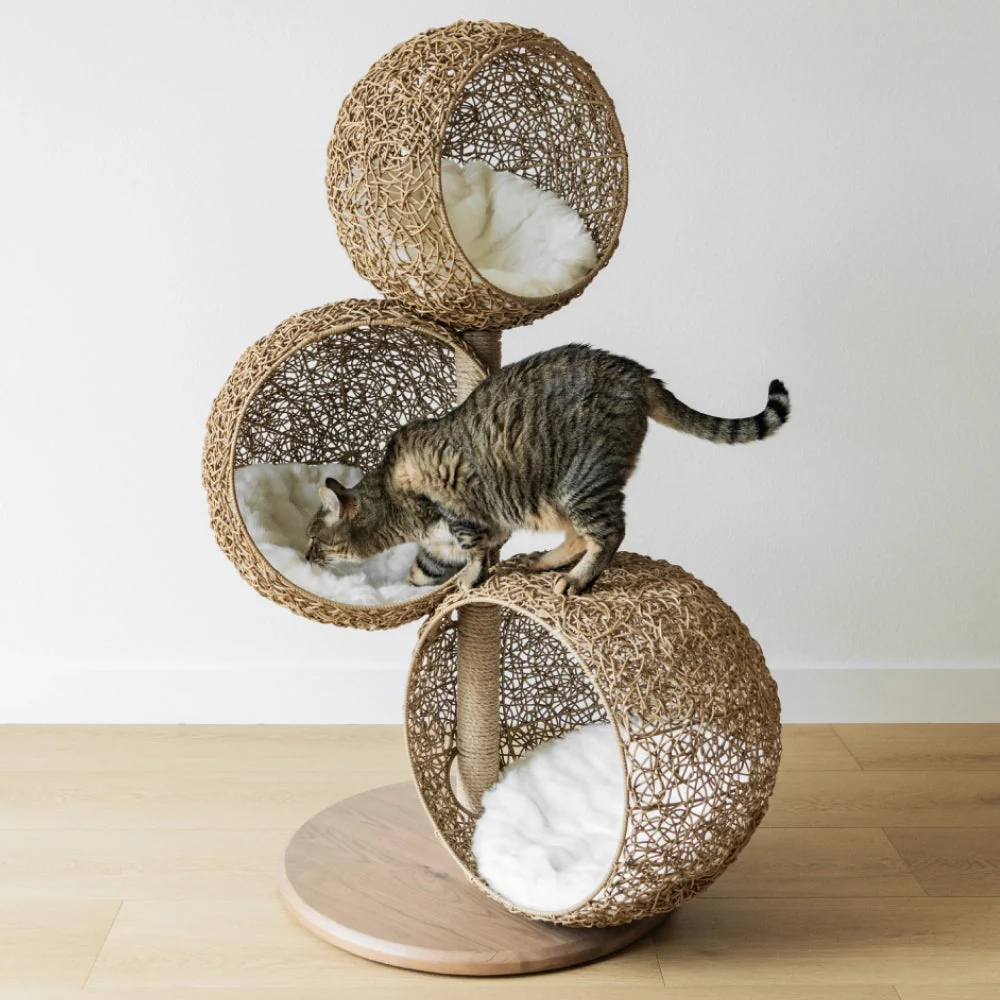
4. Toys and Play: Mental & Physical Stimulation
Playtime is essential for an indoor cat’s health and happiness. Toys encourage natural hunting behaviors and reduce destructive boredom.
Types of Toys to Consider:
- Interactive toys: Feather wands, laser pointers, and motorized toys that mimic prey movements
- Puzzle feeders: Challenge your cat to work for treats, stimulating their brain
- Balls and mice: Small toys for chasing and pouncing
- Catnip toys: Many cats love catnip’s stimulating effect (but not all)
Playtime Tips:
- Rotate toys to maintain novelty and interest
- Dedicate at least 10–15 minutes twice daily for interactive play
- Use toys that encourage jumping, stalking, and pouncing to keep your cat agile
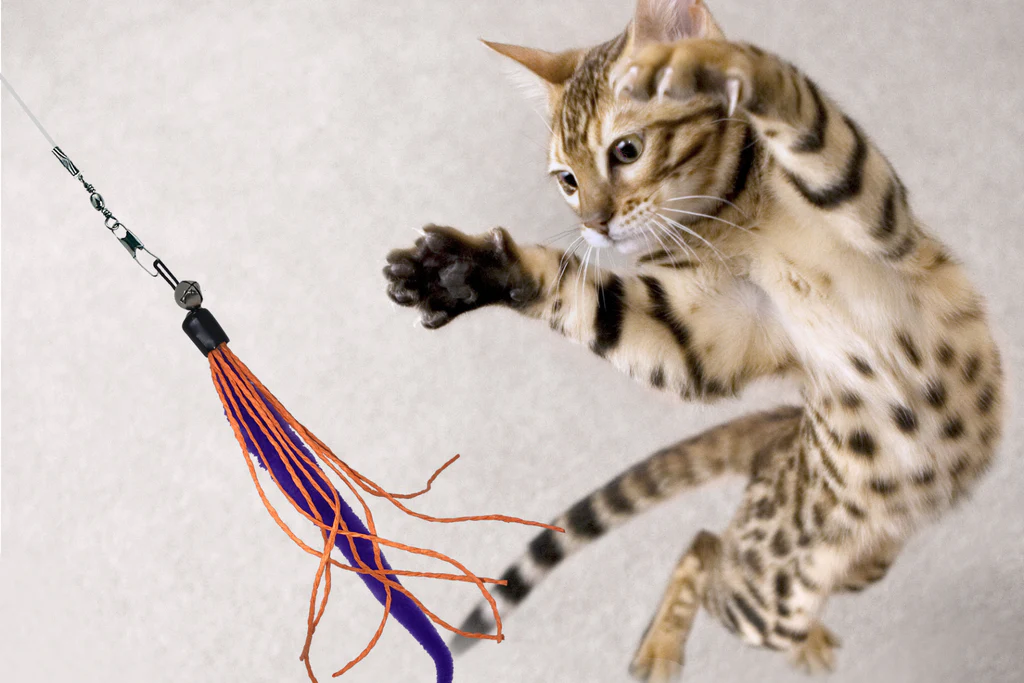
5. Environmental Enrichment Beyond Toys
Cats need diverse sensory experiences to stay happy.
Window Views
Set up a perch near a window where your cat can watch birds, squirrels, or neighborhood activity. Consider adding a bird feeder outside for extra entertainment.
Sounds and Scents
- Play soothing music designed for cats or nature sounds.
- Introduce safe herbs like catnip, valerian, or silvervine for olfactory enrichment.
- Use pheromone diffusers (e.g., Feliway) to reduce stress and promote calmness.
Water Fountains
Cats often prefer running water. A pet water fountain encourages hydration and adds a sensory element.
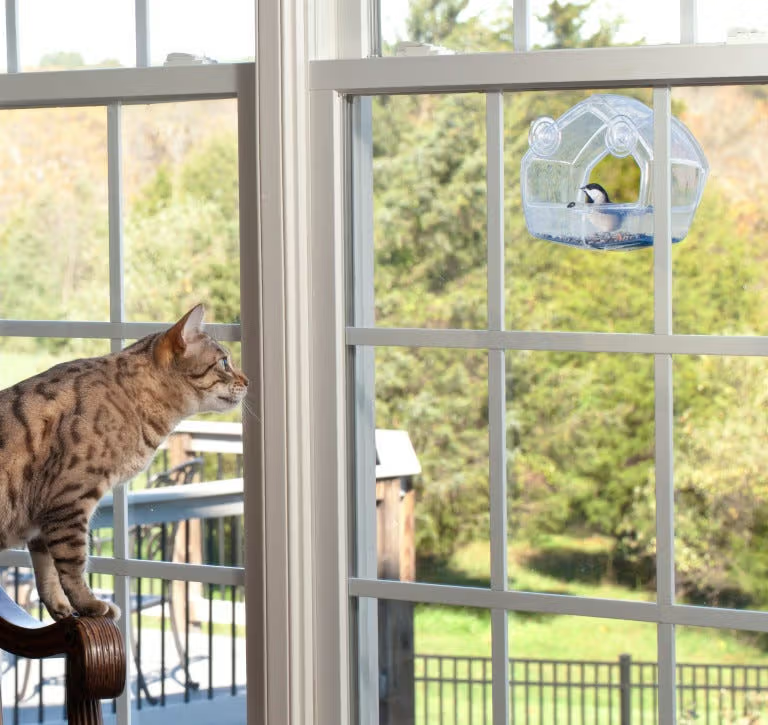
6. Feeding and Mealtime Enrichment
Transform mealtime into a stimulating activity rather than just a routine.
- Use puzzle feeders or treat-dispensing toys to encourage problem-solving.
- Spread food in different locations to stimulate foraging instincts.
- Avoid free-feeding to encourage active eating habits.
7. Companionship and Social Needs
While many cats enjoy solitude, some thrive with a feline companion. If you consider adding another cat:
- Introduce slowly with separate spaces at first.
- Monitor interactions carefully.
- Ensure plenty of resources (food bowls, litter boxes, toys) to reduce conflict.
8. Regular Vet Care and Monitoring
A safe and stimulating environment is only part of the puzzle. Regular health check-ups ensure your cat remains in top shape.
Watch for behavioral changes that may indicate stress or illness, such as hiding, aggression, or changes in eating and litter habits.

Conclusion
Creating a safe and stimulating environment for your indoor cat is one of the greatest gifts you can give. It nurtures their natural instincts, keeps them healthy, and strengthens your bond.
From cat-proofing your home to enriching their daily life with play, climbing, and cozy retreats, the tips in this guide will help your cat live their happiest indoor life.
Ready to get started? Explore your space from your cat’s point of view and make simple changes that lead to big smiles—and purrs.
